Are you considering building your own greenhouse? Look no further. In this article, we have compiled some of the best ideas and resources from around the web, while also discussing the reasons why you might want to consider each option.
Our suggestions cater to all budgets and levels of DIY experience, utilizing a variety of materials. Regardless of your choice, our ideas have one thing in common – they work well and will help you grow your plants successfully. Before we delve into the options, let’s examine the idea of a greenhouse and how to choose the right one for you.
Passive Solar Greenhouse
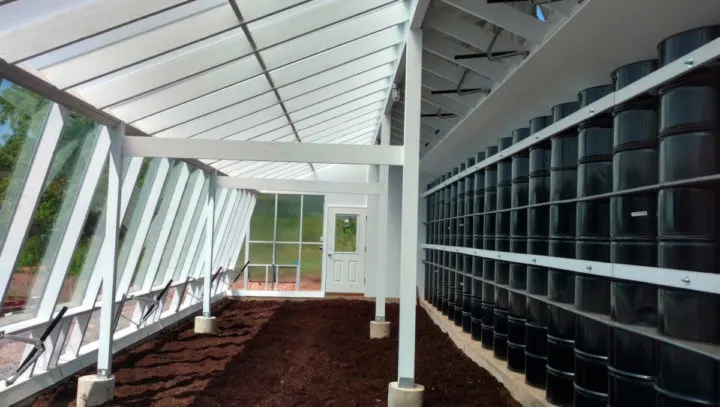
If you’re looking to grow exotic edibles all year round in a temperate climate, then this passive solar greenhouse is the ideal solution for you. This eco-friendly greenhouse design, created by Matthew and his wife Shana, is capable of maintaining a cool temperature during the summer and a warm temperature through the winter.
Despite the unpredictable weather in Pennsylvania, Matthew is able to grow citrus trees in his greenhouse.
Micro Container Greenhouse
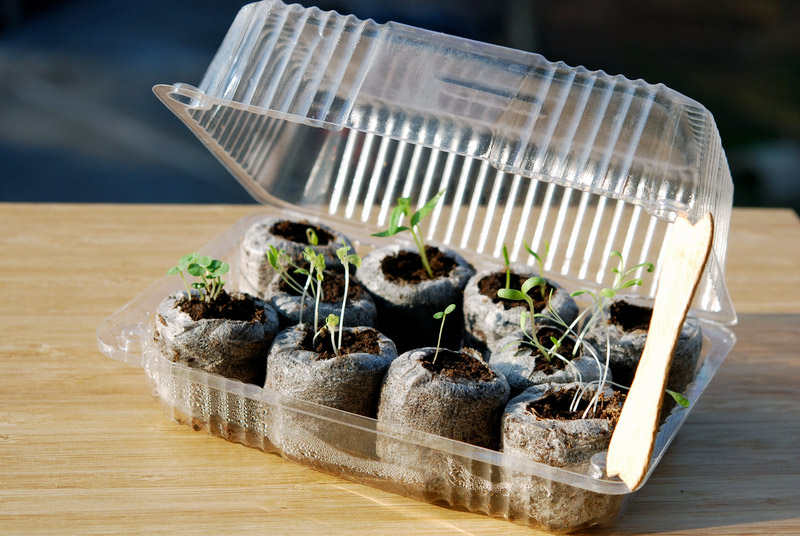
You can create a micro container greenhouse using recycled plastic food packaging. This protects a single plant or seedlings and prevents the items from ending up in a landfill.
These mini greenhouses, also known as cloches, provide a micro-climate for plants without any cost. Follow the full tutorial at NewEngland.com for step-by-step instructions. This is an excellent way to protect your plants and reduce waste.
Bubble Umbrella Greenhouse
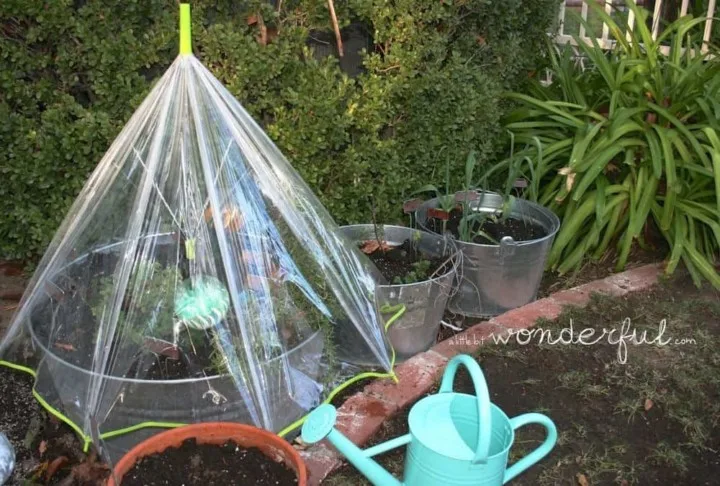
If you have an old bubble umbrella lying around, you can repurpose it as a mini greenhouse for your plants. The clear plastic material of the umbrella allows sunlight to penetrate while protecting your plants from wind and rain.
Simply place the umbrella over a container or use the frame to construct a new greenhouse with clear recycled or reclaimed plastic. This is a great way to reuse an item that is difficult to recycle and create a functional addition to your garden.
Recycled Window Hothouse For Small Spaces
If you have a small patio or balcony garden, you can still enjoy the benefits of a hothouse. Using reclaimed windows, you can create a small hothouse that is just as effective as a larger one.
Small-Space Wood Pallet Greenhouse
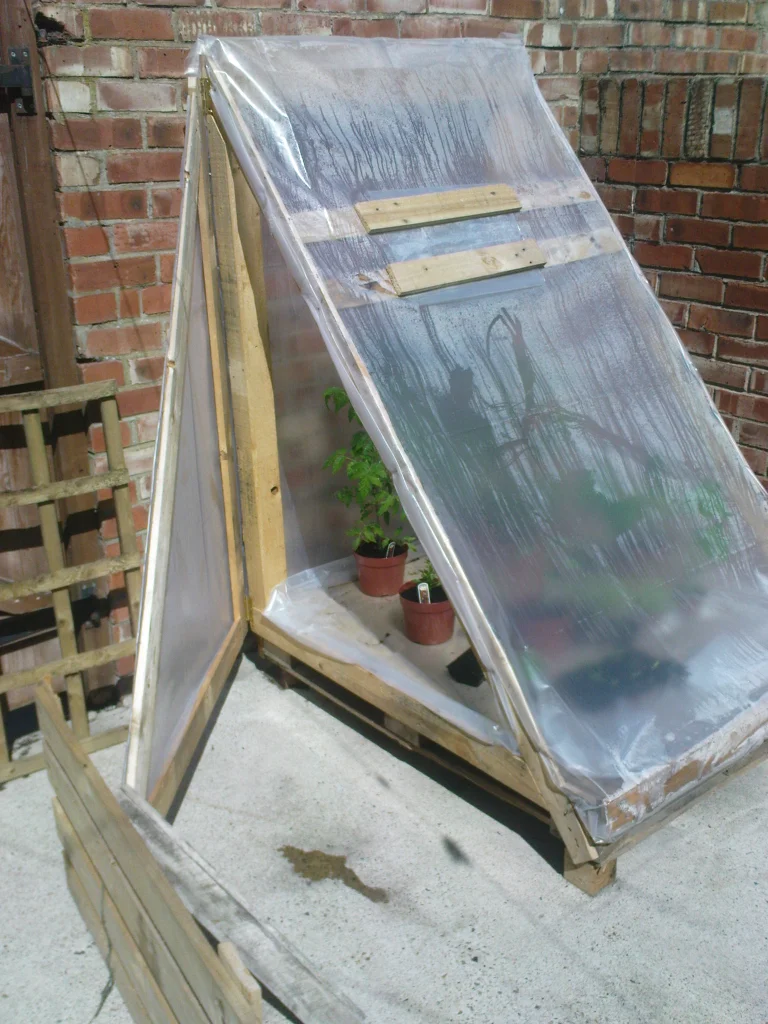
If you’re looking for a simple and affordable way to create a small-space greenhouse, consider building one from an old wood pallet. This DIY project is perfect for those who want to grow plants in a limited space.
The wooden frame provides a sturdy base for the plastic sheeting, which protects your plants from the elements. This project is easy to follow and can be completed in a weekend. You can find the full tutorial for building this wood pallet greenhouse on Instructables.com.
DIY Folding Greenhouse
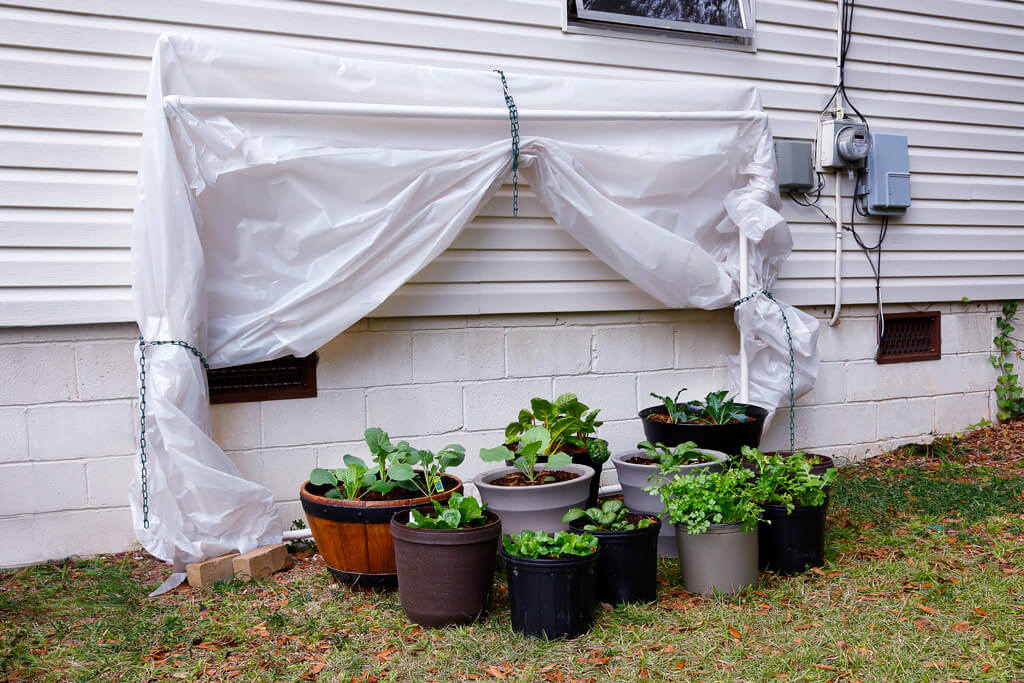
If you have a small space that needs to be used for more than just a greenhouse, a DIY folding greenhouse could be the solution you are looking for. You can fold it away neatly when it is not in use, freeing up space for other activities. This type of greenhouse is perfect for small spaces, where every inch should be utilized for more than one thing.
Upcycled Trampoline Greenhouse
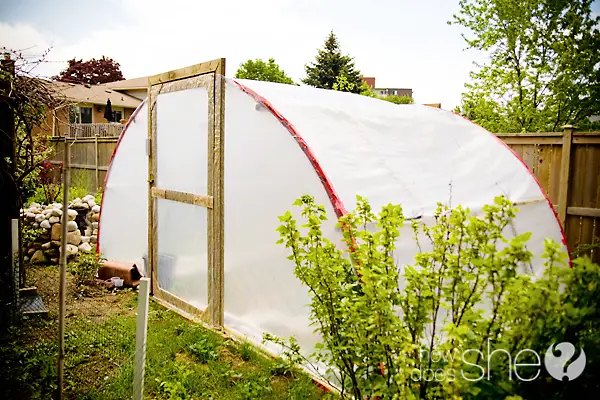
If you have an old trampoline lying around, you can easily turn it into a small tunnel-shaped greenhouse. By using the metal circular frame of the trampoline, you can create two arches that will serve as the foundation of your greenhouse.
This method can also be applied to create a smaller row-cover from a mini trampoline or repurposing the metal frame of an old tent or fibreglass tent poles. Check out HowDoesShe.com for a full tutorial on how to transform your old trampoline into a useful and sustainable greenhouse.
PVC Pipe Tomato Tent
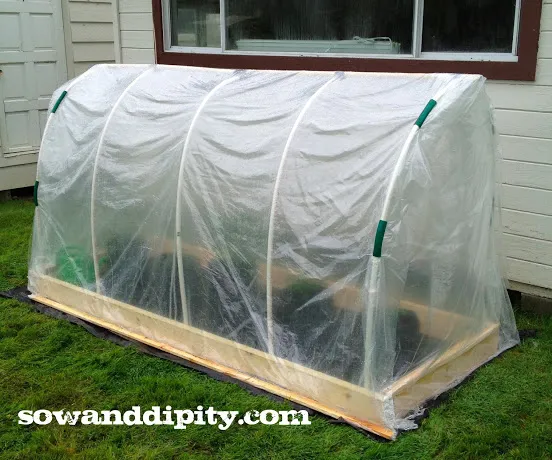
If you’re looking for an affordable and easy way to create a small polytunnel to cover your garden bed, consider making a structure using PVC pipe. This material is commonly used in larger DIY greenhouses as well. By using reclaimed piping, you can make a greener and more sustainable choice.
Check out the tutorial at SowAndDipity.com for a full guide on how to create a tall PVC pipe structure that can accommodate a row of tomato plants. Keep in mind that if you grow tomatoes in an enclosed greenhouse, you may need to hand pollinate them.
Using PVC pipes to create a tomato tent is a great way to protect your plants from the weather and pests while also providing them with a warm and humid environment. You can easily customize the size and shape of the structure to fit your specific needs. Here are some benefits of using PVC pipes for your tomato tent:
- Affordable and easy to find at any hardware store
- Lightweight and easy to work with
- Can be easily cut and assembled with basic tools
- Durable and long-lasting
- Can be reused for other projects
Overall, creating a PVC pipe tomato tent is a great option for any gardener looking to protect their plants and extend their growing season.
PVC Pipe Hoop House
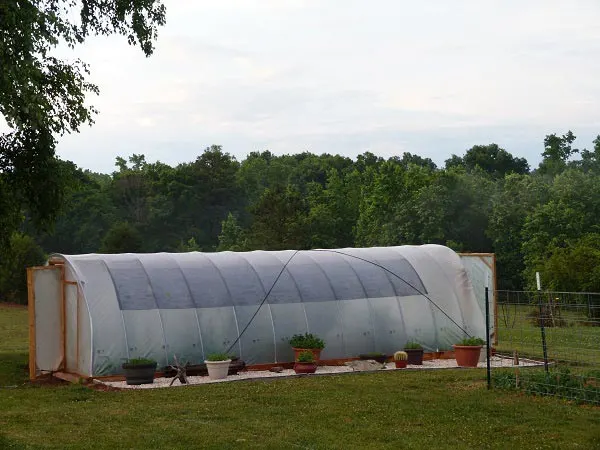
Looking for a cost-effective way to create a greenhouse? Consider building a PVC pipe hoop house. This DIY project takes advantage of the flexibility and affordability of PVC pipe to create a sturdy structure for your greenhouse. Follow the detailed instructions at NaturalLivingIdeas.com to get started.
Large PVC Pipe Hoop House
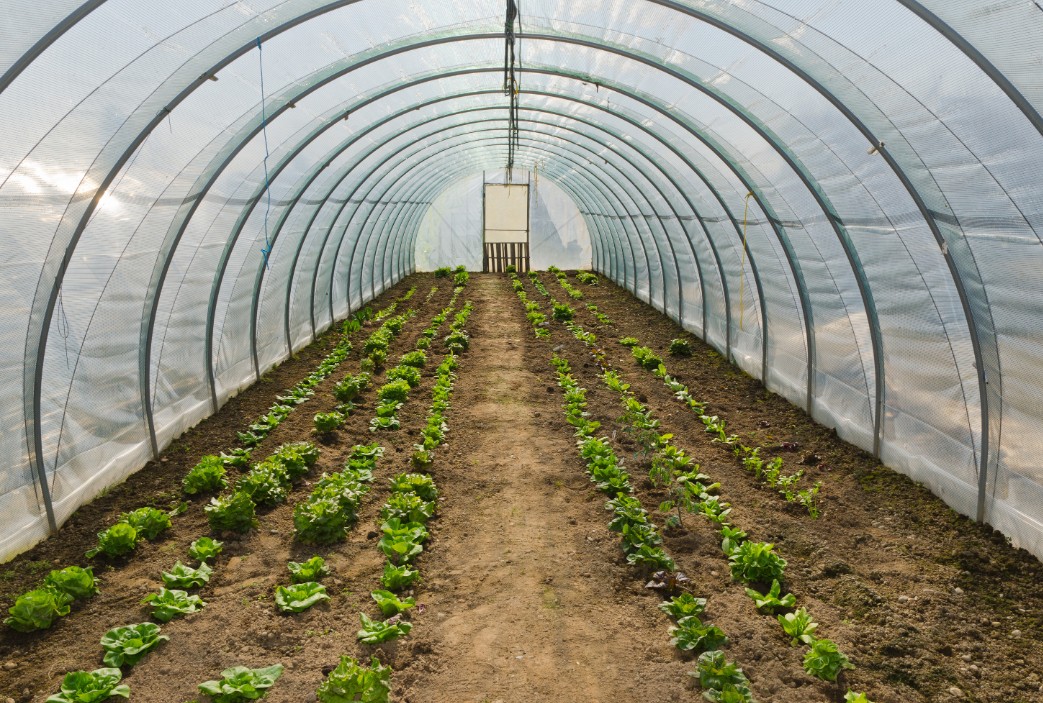
If you’re looking to create a large growing area, a PVC pipe hoop house can be a great solution. With a wooden base rail and PVC pipes, you can easily scale up the project to create a much larger polytunnel/hoop house structure.
One of the benefits of this method is that it allows for significantly larger growing areas than traditional glass and wood structures. For a full tutorial on how to create a PVC pipe hoop house, check out BaileyLineRoad.com.
Recycled Car Port Greenhouse
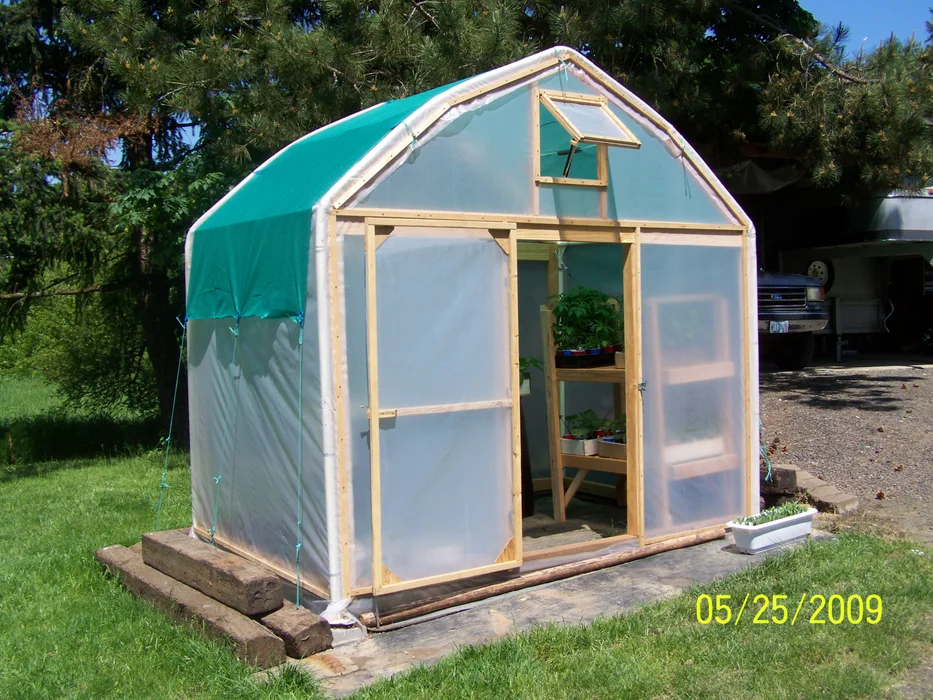
If you’re looking for an eco-friendly way to build a greenhouse, consider repurposing an old carport frame. With this DIY project, you can create a spacious greenhouse structure without contributing to landfill waste. Check out the full tutorial on Instructables.com for step-by-step instructions.
Barn Shaped Greenhouse
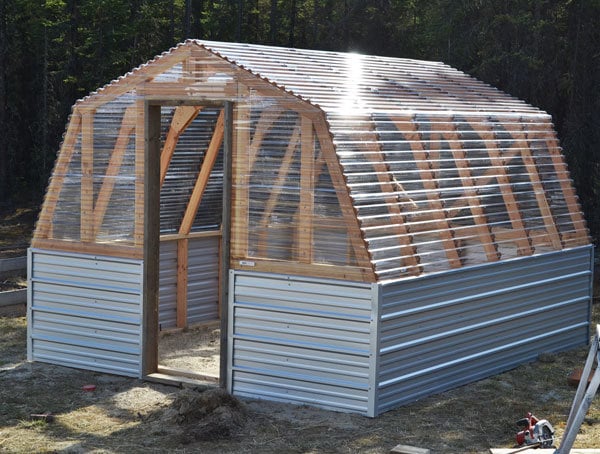
If you’re looking to add some rustic charm to your garden or property, a barn shaped greenhouse might be just what you need. These DIY plans from Ana-White.com provide step-by-step instructions for creating your own unique greenhouse that will fit perfectly in a rural or urban setting. With its attractive design and practical functionality, this greenhouse is sure to be a standout feature in your garden.
Roof Ventilation Greenhouse
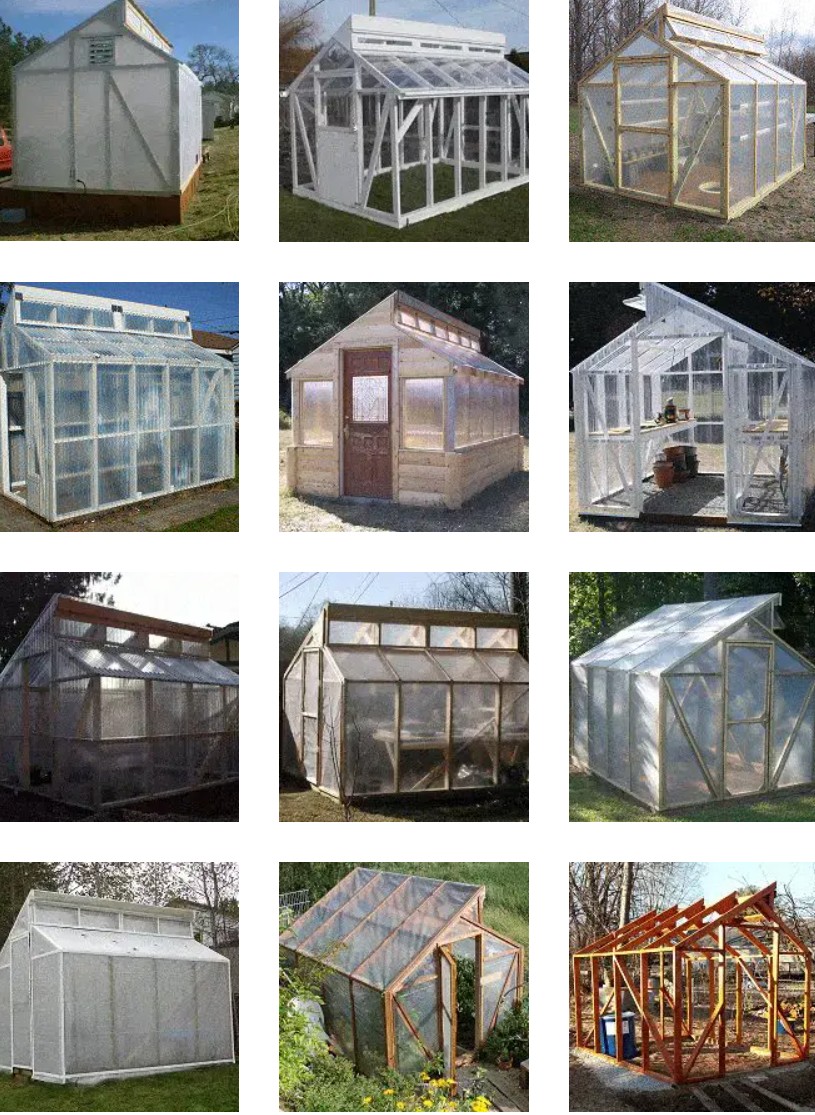
If you’re struggling with ventilation in your greenhouse or tunnel, consider building a split-level roof greenhouse. This design allows for the addition of ventilation flaps or windows at the top, providing excellent airflow.
This DIY project is perfect for warmer climates and can be found at BuildEazy.com. With its practical design and easy-to-follow tutorial, you can create a well-ventilated greenhouse that meets your gardening needs.
Affordable, Strong, Wood-Frame Greenhouse
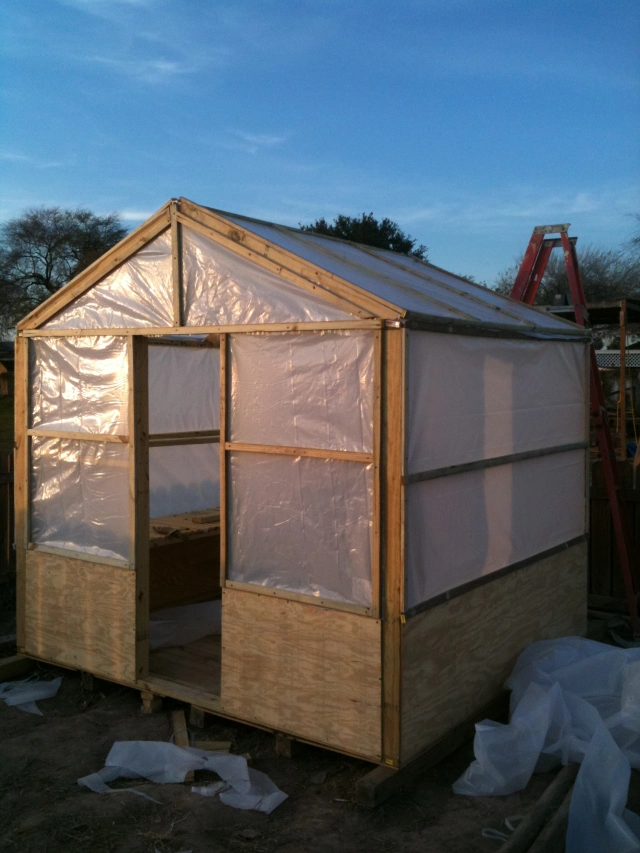
Building a durable, wooden-framed greenhouse doesn’t have to break the bank. With the right guidance, it’s possible to construct a sturdy structure on a modest budget. Check out Idea On A Farm for a comprehensive tutorial on how to build your own affordable, strong, wood-frame greenhouse.
DIY Geodome Greenhouse
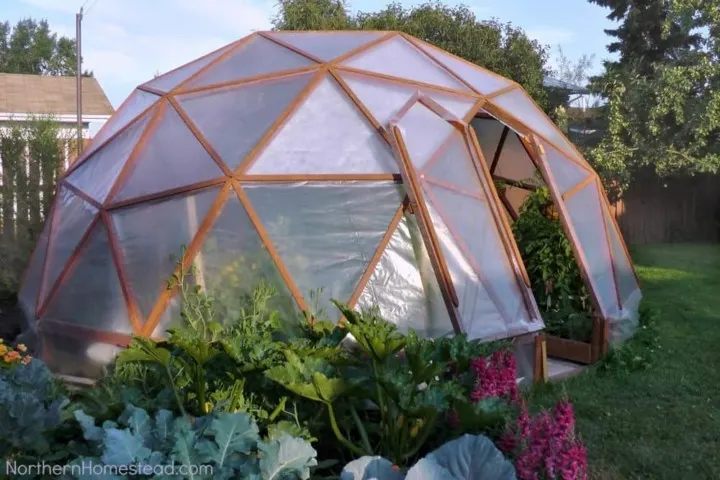
If you’re an experienced DIY enthusiast looking for a new challenge, building a geodome greenhouse could be the perfect project for you. While it involves more complex joinery, the end result is a unique and visually stunning greenhouse that’s sure to impress.
The geodome design allows for optimal sunlight exposure and efficient use of space. For a full tutorial on how to build your own geodome greenhouse, visit NorthernHomestead.com.
Geodesic Dome Solar Greenhouse
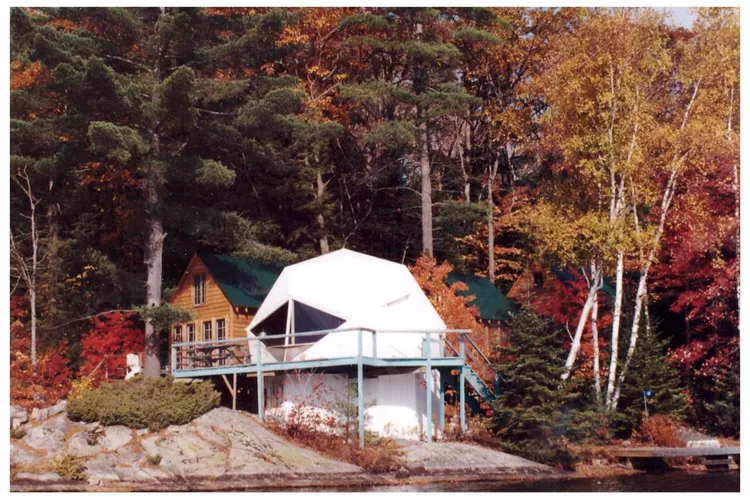
If you’re looking for a unique and sustainable way to grow your own food, consider building a geodesic dome solar greenhouse. While not the simplest DIY project, this innovative greenhouse design is perfect for those who are passionate about eco-friendly gardening. By harnessing the power of the sun, you can create a warm and nurturing environment for your plants to thrive in. For a full tutorial, visit TreeHugger.com.
Plastic Bottle Greenhouse
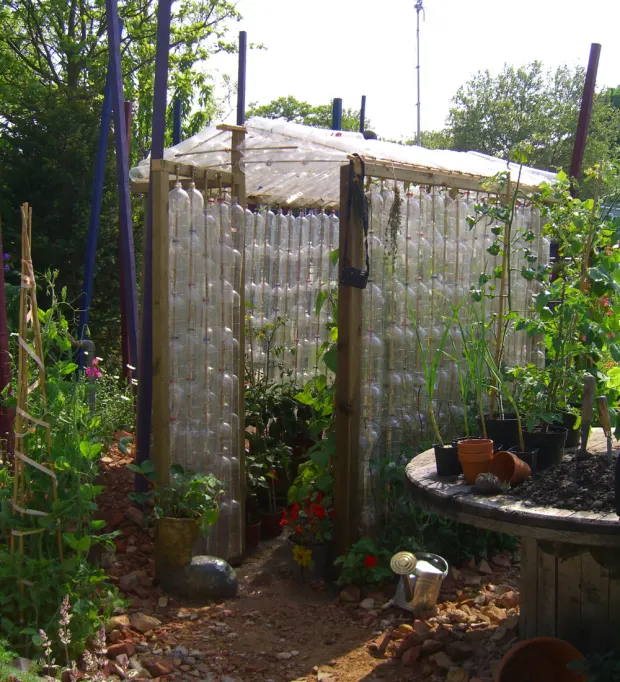
If you’re looking for an eco-friendly way to build a greenhouse, consider using plastic bottles. This innovative design involves filling a wooden frame with plastic pop bottles, creating a sturdy and sustainable structure.
Not only does this method help recycle plastic bottles, but it also provides an affordable alternative to traditional greenhouse materials. With the right tools and materials, you can easily build your own plastic bottle greenhouse. Check out the full tutorial at DenGarden.com for step-by-step instructions and helpful tips.
‘Walipini’- Earth Sheltered Solar Greenhouse
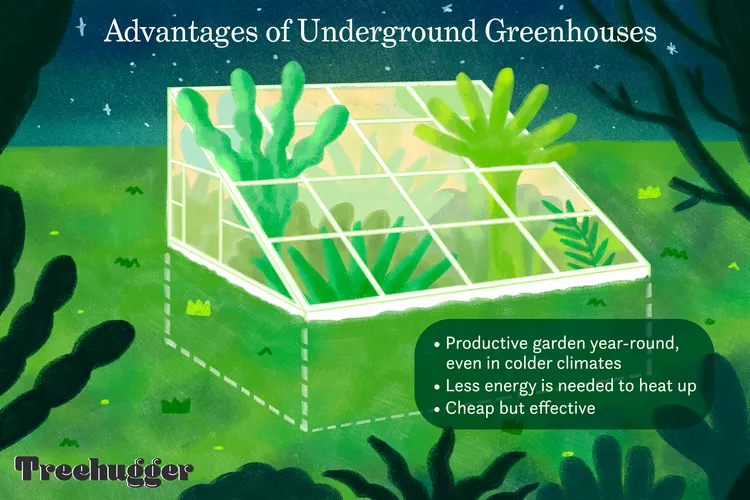
If you’re looking for a greenhouse that can keep your plants warm all winter, the ‘walipini’ might be just what you need. This sunken structure, also known as an earth-sheltered cold frame, is designed to borrow heat from the ground to keep your plants cozy.
The word ‘walipini’ comes from the Aymara language of an indigenous Bolivian tribe, and it means ‘place of warmth’. These structures have been used in Bolivian communities for centuries, and now they are becoming popular all over the world.
To build your own ‘walipini’, check out the full tutorial on TreeHugger.com. With a little bit of planning and effort, you can create a greenhouse that will keep your plants thriving all year round.
Earth-Sheltered Greenhouse
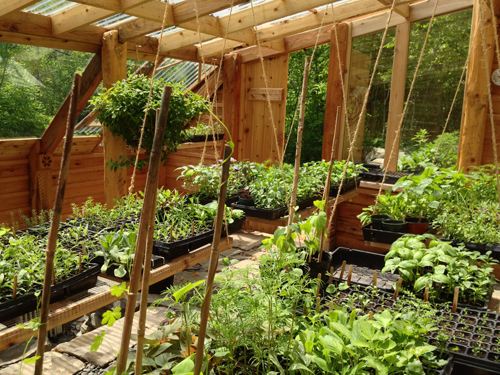
Building an earth-sheltered or bermed earth greenhouse on a south-facing slope can be an ideal way to utilize the earth’s warmth and create an optimal growing environment. By utilizing the slope, you can also reduce the amount of excavation necessary. MotherEarthNews.com provides a full tutorial on how to build an earth-sheltered greenhouse.
Earth Bag Walipini Greenhouse
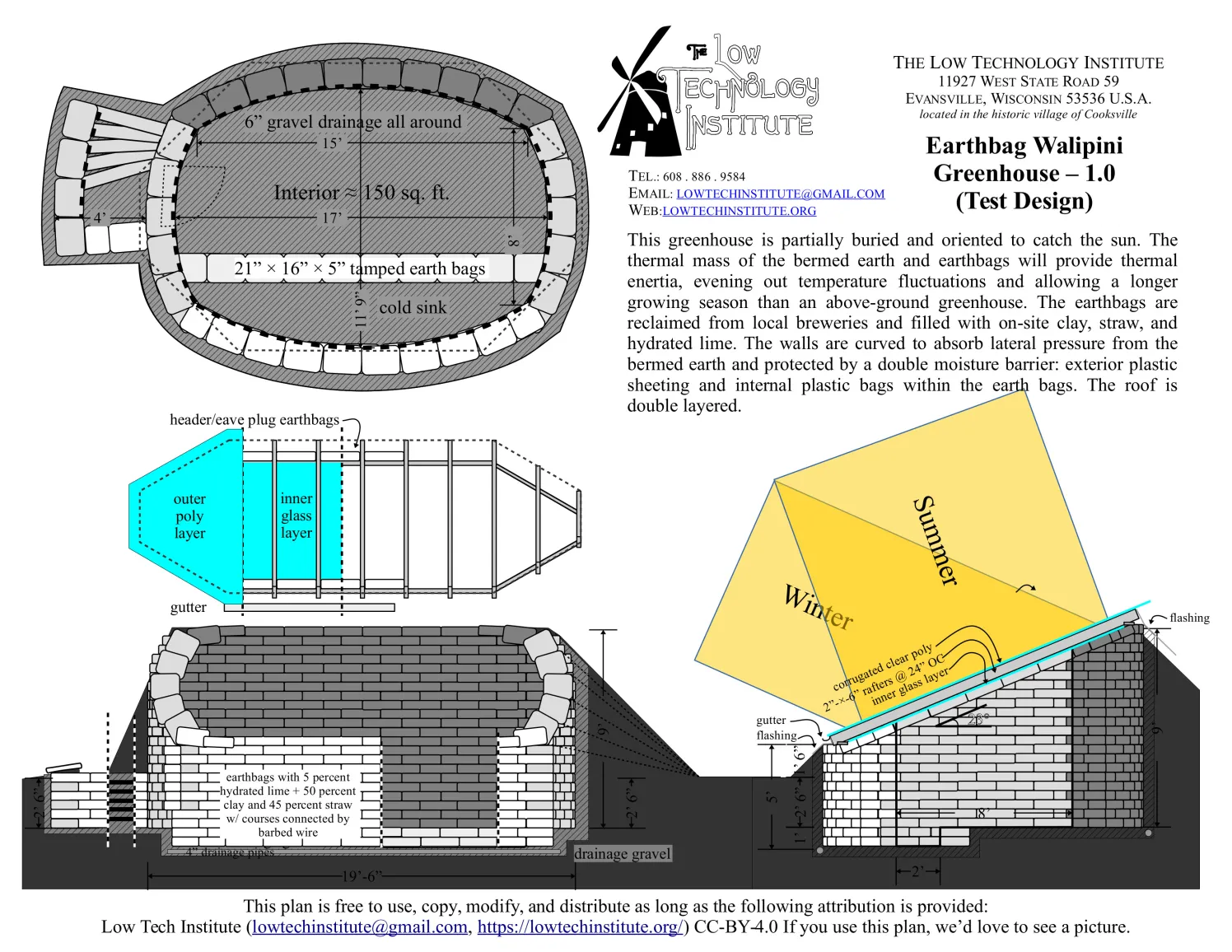
You can use earth-filled bags to line the underground section of your walipini style greenhouse. The bags store the sun’s heat during the day and release it later, evening out temperature fluctuations and increasing the length of the growing season. For a full tutorial on how to build an earth bag walipini greenhouse, visit LowTechInstitute.org.
Straw Bale Greenhouse
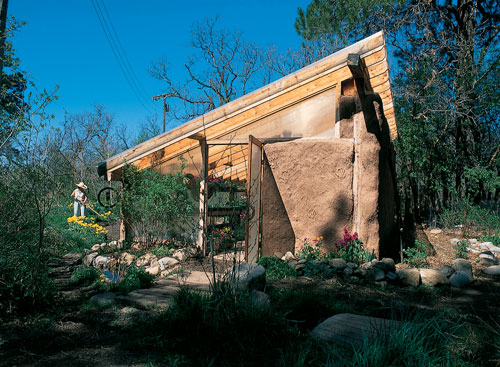
If you’re looking for a sustainable and affordable way to build a greenhouse, using straw bales might be the perfect solution. Not only are they easy to work with, but they also provide excellent thermal mass and insulation on the northern side of the greenhouse.
Straw bales are a natural and warm material that can be incorporated into the structure of the greenhouse. Check out the full tutorial on MotherEarthLiving.com for a step-by-step guide on how to build your own straw bale greenhouse.
Earthship Greenhouse
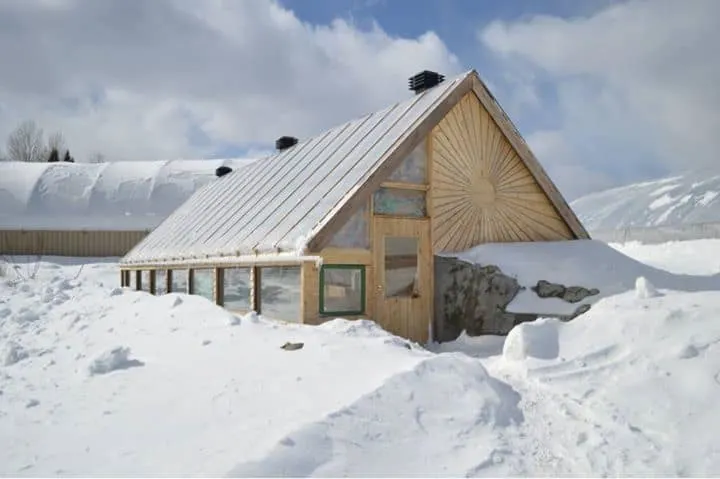
If you’re looking for a more permanent and sustainable growing area, consider building an Earthship greenhouse. These greenhouses are built using sustainable construction techniques and are integrated into the home, rather than being relegated to the end of the garden. Using natural and recycled materials, even unskilled novices can build an Earthship greenhouse.
The greenhouse is an integral part of the home and can be used to grow a variety of plants and vegetables. By building an Earthship greenhouse, you can create a more sustainable lifestyle and reduce your carbon footprint.
To learn how to build an Earthship greenhouse, you can purchase a tutorial that includes a film, ebook, and plans at GreenhouseOfTheFuture.com. With this tutorial, you can get started on creating your own sustainable greenhouse and enjoy fresh produce all year round.
Recycled Glass-Window DIY Greenhouses
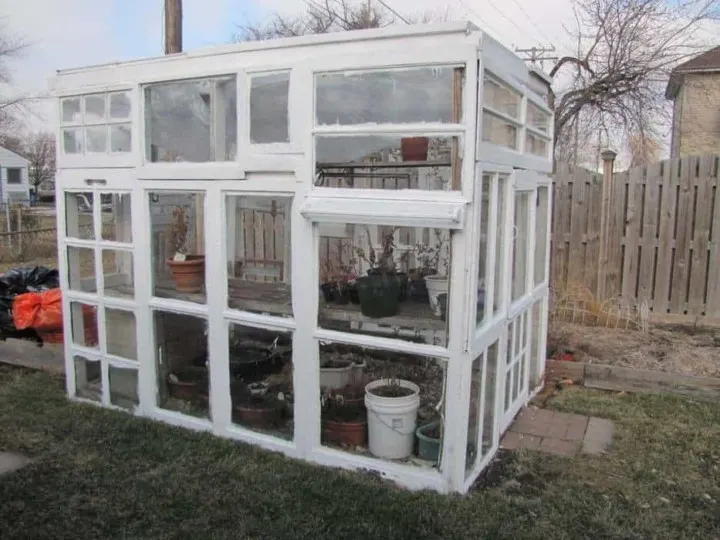
Creating a greenhouse can be expensive, but using recycled glass windows can be a cost-effective alternative. Rather than purchasing new glass or windows, you can use recycled materials from your home or local reclamation yard to build a variety of greenhouses.
Instructables.com provides a full tutorial on how to build a DIY greenhouse using recycled glass windows. This resourceful solution not only saves money, but also helps reduce waste.
Glass Jar DIY Greenhouses
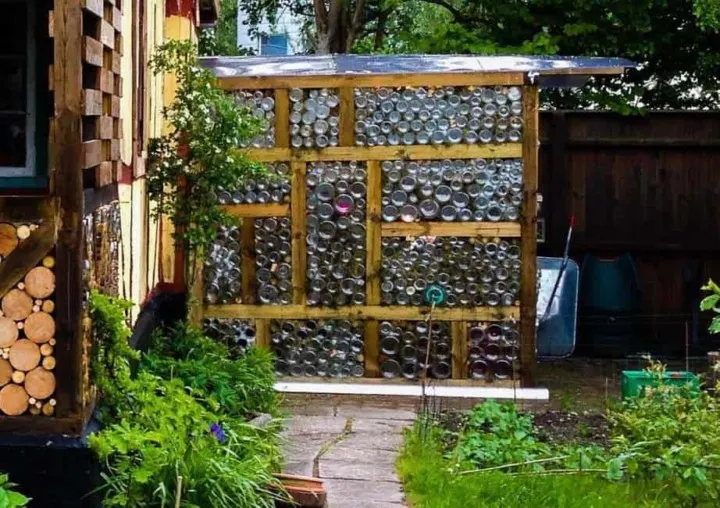
Looking for an innovative way to recycle household waste in your garden? Consider using glass jars or bottles as an alternative to glass sheeting in your greenhouse structure. This DIY greenhouse idea allows light to penetrate through the jars, creating a unique and sustainable gardening solution.
To create your own glass jar greenhouse, follow the full tutorial available on Instructables.com. Remember that there are many other amazing DIY greenhouse options out there to choose from. The key is to select an option that is suitable for your specific location and needs.
To ensure your greenhouse is as environmentally friendly as possible, try using natural materials available in your local environment or reclaimed items from your surroundings. The best DIY greenhouses are those that have a minimal impact on the planet while effectively helping you grow your own food.
Consider this innovative glass jar DIY greenhouse as a way to recycle and create a sustainable gardening solution for your home.
Summary
You have learned about various DIY greenhouse ideas that you can implement in your backyard. These ideas include using old windows, PVC pipes, and even repurposing old pallets. You can also use simple materials like plastic sheeting and wooden frames to create a low-cost greenhouse. With these ideas, you can grow your own vegetables and plants year-round, no matter the weather outside.